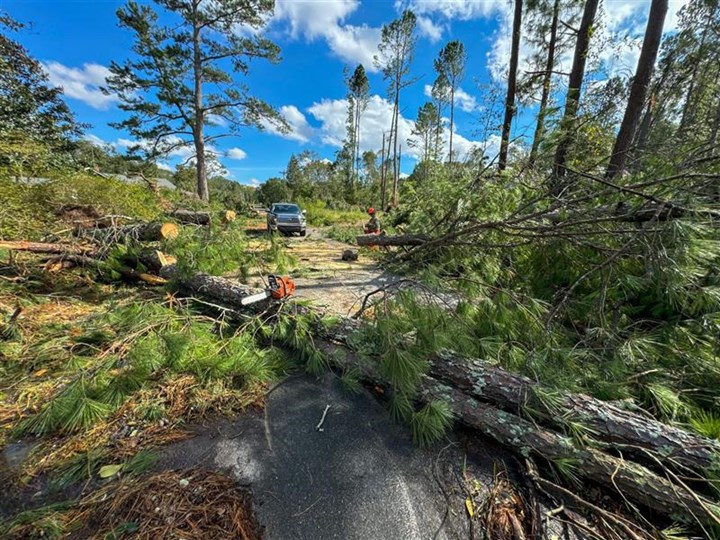
Columbia, S.C. – One year after Hurricane Helene impacted South Carolina, the state continues to make significant progress in its disaster recovery efforts. State, county, federal, and non-governmental partners continue coordinated efforts to support communities in rebuilding and recovering from the September 2024 storm.
Helene began impacting South Carolina on September 27, 2024, causing significant damage in 33 counties. The storm brought 21 tornadoes, hurricane-force wind gusts, heavy rain, and widespread flash and river flooding. 49 people died, and nearly 5,000 homes were damaged. Downed trees and power lines caused extended power outages and significant amounts of debris. Hurricane Helene was noted as the deadliest hurricane to impact South Carolina in the last 100 years.
Since last year, the Federal Emergency Management Agency (FEMA) has provided more than $323 million in Individual Assistance to homeowners and renters in 28 declared counties and the Catawba Indian Nation. The National Flood Insurance Program (NFIP), administered by FEMA, has paid policyholders over $9.72 million for flood losses stemming from Hurricane Helene, with over 368 policyholders having filed claims following the storm’s impacts in South Carolina, five claims remain open. The U.S. Small Business Administration has approved more than $145 million in low-interest home physical damage loans, business physical damage loans, and economic injury disaster loans. State and local agencies, volunteer organizations, and non-profit organizations are coordinating efforts to repair hundreds of damaged or destroyed homes. Most of an estimated 10 million cubic yards of storm debris has been cleared. South Carolina has identified approximately 1,500 projects requiring FEMA Public Assistance at an approximate cost of over $1.3 billion.
Governor Henry McMaster in June approved the state budget, which includes $35 million for the Department of Transportation to cover debris removal and road and bridge repairs not reimbursed by the federal government, $40 million for the South Carolina Office of Resilience to replenish the Disaster Relief and Resilience Reserve Fund, and $201.7 million for the non-federal match for public sector recovery projects and to establish the South Carolina Public Assistance program, which the South Carolina Emergency Management Division will administer.
"While the road to recovery is long, we have made measurable progress over the last year," said Kim Stenson, Director of the South Carolina Emergency Management Division. “We know recovery doesn’t stop after the storm leaves. It’s a process, and we’ll continue working together until the job is done.”
For South Carolinians, an important lesson from Hurricane Helene is that from the coast to the mountains, everyone should have a plan in place with family and friends of how they will respond to an emergency. Knowing the types of emergencies your community may face is essential to being prepared for them. Learn more at SCEMD.org. Hurricane season runs from now until November 30. South Carolinians are encouraged to review emergency plans and preparedness resources. For more information on Hurricane Helene recovery, visit FEMA.Gov.